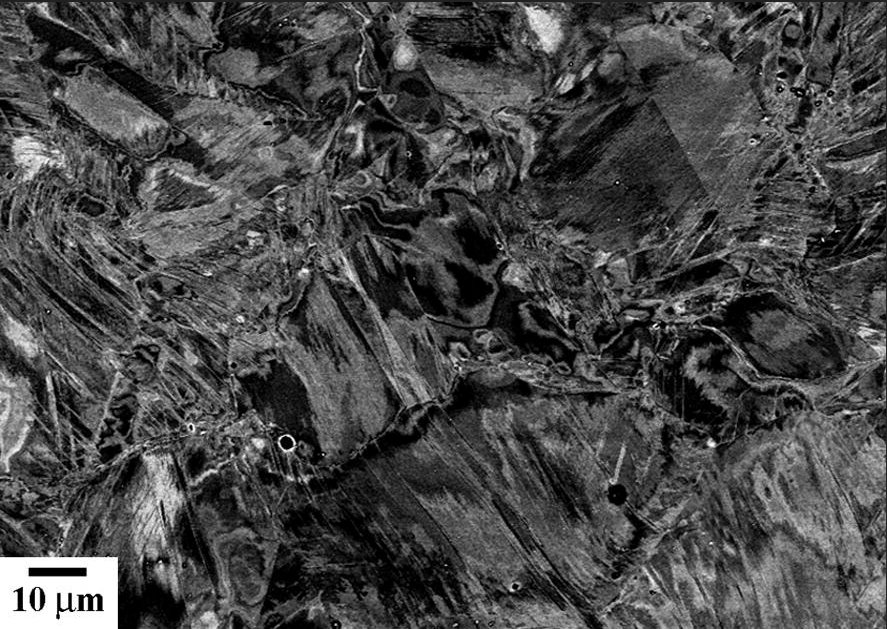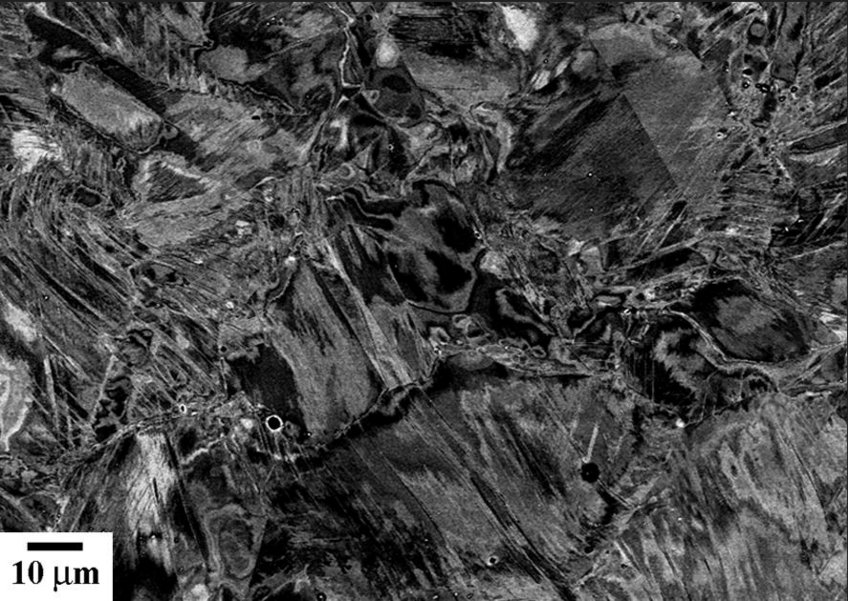Multistage strain hardening in a high strength and ductile weight-reduced Fe-Mn-Al-C steel
The focus of this project is the investigation of the kinetics of the deformation structure evolution and its influence on the strain hardening of a Fe-30.5Mn-2.1Al-1.2 (wt.%) steel. The observations are carried out during tensile deformation by transmission electron microscopy and electron channeling contrast imaging combined with electron backscatter diffraction.
A superior combination of strength and ductility (ultimate tensile strength of 1.6 GPa and elongation to failure of 55%) is achieved by the multiple-stage strain hardening. This effect can be explained by refinement of the dislocation substructure and the activation of deformation twinning afterwards. The size of the dislocation substructure, namely, Taylor lattices, cell blocks and dislocation cells fully determine the early hardening stage. The evolved dislocation substructure is strongly influenced by the high carbon content in solid solution, reducing the dislocation cross-slip frequency. Increasing applied stress the cross-slip frequency increases as well due to a gradual transition from planar (Taylor lattice) to wavy (cells, cell blocks) dislocation configurations. The size of such dislocation substructures scales inversely with the applied resolved stress. The so-called microband-induced plasticity effect is not observed and favored during tensile deformation due to texture effects and has no effect on strain hardening.

